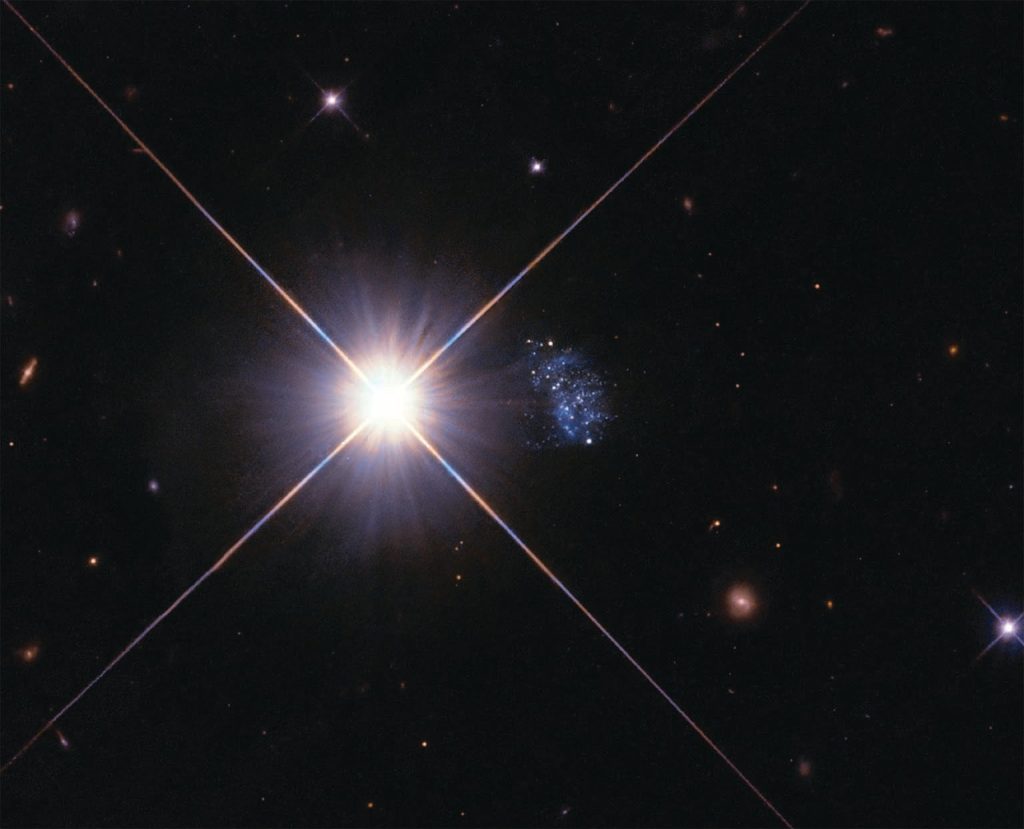A galaxy that is just emerging from hiding may be one of the youngest ever discovered, offering a potential portal to the secrets of the early universe. Aptly named “Peekaboo,” the galaxy moved from behind a bright star (from our perspective) only within the past 50 to 100 years. But it’s not just the galaxy’s relatively recent appearance that has astronomers excited. In results published in Monthly Notices of the Royal Astronomical Society, scientists report that Peekaboo appears to have a significant lack of old stars. The new measurements suggest the dwarf galaxy may have formed billions of years after the big bang—much later than other galaxies close to ours.
“Pretty much every galaxy in the nearby universe has very, very old stars dating back to shortly after the big bang,” says Gagandeep Anand, an astronomer at the Space Telescope Science Institute and co-author of the new study. As stars age, they create heavier elements, including metals. Peekaboo is one of just three comparatively nearby galaxies that astronomers have found to be extremely metal-poor—and at 22 million light-years away, it’s by far the closest, making it favorable for further study.
Astronomers first spotted a hint of the Peekaboo galaxy in 2001 during an all-sky survey, but the glare of a closer star largely obscured it from additional scrutiny. High-quality images taken by the Hubble Space Telescope in 2020 confirmed the partially hidden object to be a dwarf galaxy, and later optical observations revealed a lack of elements heavier than hydrogen and helium—suggesting that Peekaboo’s conditions could mimic those of galaxies in the early universe.
Researchers don’t yet know whether Peekaboo’s metal-poor state definitively indicates its age. “There are other possibilities to consider as well,” says Rutgers University astrophysicist Kristen McQuinn, who was not involved in the new study. One alternative possibility she suggests is that Peekaboo, as a dwarf galaxy, has a relatively weak gravitational pull that allowed its heavy metals to be expelled by galactic winds.
Current measurements don’t suggest that the galaxy has any stars older than two billion or three billion years, but Anand notes that follow-up observations, perhaps with the ultrapowerful James Webb Space Telescope, would allow the researchers to search for fainter stars as old as 13 billion years. If found, such stars would call Peekaboo’s youth into question.
But if the Peekaboo galaxy is as young as the researchers think it could be, it would be one of the best laboratories available to study the way the universe was closer to the big bang. Researchers could come away with a better understanding of the physics of gas cooling and star formation in an environment like the early universe, McQuinn says.

